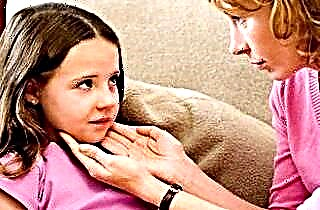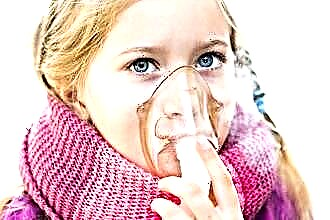Causes of simultaneous tachycardia and shortness of breath
The causes of heart palpitations and shortness of breath are different: from hyperthermia to oncological processes. Usually these symptoms are compensatory in nature and appear in order to quickly saturate the body with oxygen.
Tachycardia and rapid breathing are also observed in healthy people (in newborns, heart rate 110-120 beats / min and the number of respiratory movements 40-60 per minute is considered the norm, and physical activity - pregnancy, stress - is also referred to as reflex heart palpitations).

Cardiovascular problems
The function of the cardiovascular system is to provide all organs and tissues of the body with oxygen. If for some reason the normal blood flow is disturbed, a state of hypoxia appears and compensatory mechanisms are activated to resume adequate oxygenation. Causes:
- Cardiac ischemia... With ischemic heart disease, atherosclerotic plaques form on the walls of blood vessels, which impair the flow of blood to the heart, brain and other organs.
- Arrhythmia - violation of rhythm and heart rate, impairing blood circulation.
- Hypertonic disease... High blood pressure does not immediately manifest itself as tachycardia and shortness of breath. With a prolonged course and the absence of treatment, the load on the heart increases and atherosclerosis develops, and this is the basis for the appearance of such symptoms.
- Congenital and acquired heart defects, in which the structure of the structure of the valves, walls, partitions is disrupted and, as a result, the difficulty of normal blood flow.
- Heart failure usually - a complication of the above diseases, characterized by weakness and inefficiency of the heart.
Pathologies of other organ systems
In addition to diseases of the cardiovascular system, tachycardia and difficult breathing also appear due to other diseases:
- Respiratory diseases most often occur with the manifestation of dyspnea (disorder of the act of breathing). The reason is the obstructed passage of air through the airways (broncho- or laryngospasm, foreign body bronchus, asthma, obstructive bronchitis) or disturbances in gas exchange caused by dysfunction of the lung tissue (pneumonia, lung cancer, pneumosclerosis).
- Anemia - develops due to a lack of hemoglobin in the blood, the reason is a deficiency of iron, vitamin B 12, bleeding, oncology, hereditary diseases.
- Endocrinological diseases: diabetes mellitus, pheochromocytoma, thyroid dysfunction.
- Dysfunction of the autonomic nervous system (VVD).
- Infectious diseases with an increase in body temperature.
- Allergic reactions (Quincke's edema, anaphylactic shock).
- Bad habits (smoking, drinking alcohol, drugs). With a sharp rejection of these substances, withdrawal syndrome develops.
What diagnostics do you need to undergo?
If the patient noticed the appearance of tachycardia and shortness of breath at rest or accompanied by other symptoms, you should consult a doctor as soon as possible.
The first thing the doctor will do is take a thorough history. It is important to find out under what circumstances the patient notes symptoms (physical activity, stress, rest), whether there is pain in the heart, cough, general weakness, whether the person is taking any medications. Next, the doctor examines the patient in detail, including a visual examination of the mucous membranes and skin, measures the pulse, blood pressure, palpation and auscultation.
From laboratory tests, a general analysis of blood and urine, blood biochemistry is done; from instrumental - ECG, X-ray of the lungs. If necessary, an ultrasound scan of internal organs is additionally performed, a consultation of narrow specialists is prescribed. A carefully collected anamnesis and a properly selected examination are the main conditions for making a diagnosis.
Treatment and assistance to the patient
A person who complains of a fast heartbeat and difficulty breathing is often prone to panic and fear of death. The causes of these symptoms are dangerous, therefore, the patient must be immediately helped and prescribed the correct treatment.
First aid support: available methods
If shortness of breath or tachycardia began suddenly and intensifies, immediately go to the hospital or call an ambulance. Before the arrival of doctors, they do everything to alleviate the condition with a rapid heartbeat and lack of oxygen - they give a half-sitting position with support on their hands, provide fresh air. Further methods and techniques of assistance depend on what is the cause of the attack.
When a person began to suffocate due to the ingress of a third body into the throat, they remove it as soon as possible: use the Heimlich technique; in case of an allergic reaction, they remove the irritating factor, take antihistamines.
If the heartbeat increases sharply, it is recommended to perform vagal tests, which reduce the activity of the sympathetic nervous system and have a therapeutic effect:
- massage of the carotid sinus (the branch of the carotid artery) for three to five minutes;
- sharp straining after a deep breath (Valsalva test);
- holding your breath.
Taking medications
If the cause of the attack is unknown, the medicine is not taken without a doctor's prescription. To select an adequate and effective therapy, they are additionally examined.
What does the treatment regimen depend on?
Frequent pulse and shortness of breath are usually not an independent disease, but a symptom of other diseases. Therefore, the underlying pathology is treated, not the symptom.
With heart failure, a large number of drugs are prescribed that normalize blood pressure (ACE inhibitors, sartans, beta-blockers), antiarrhythmics and diuretics that remove excess fluid from the body and reduce swelling. With proper treatment, the rate of pulse and respiration is quickly achieved.
If increased breathing and heart rate are caused by diseases of the bronchopulmonary system (asthma attack), use short-acting bronchodilators in the form of an aerosol. On inhalation, the drug enters the bronchi and eliminates the spasm. When necessary, the treatment regimen includes inhaled corticosteroids, prolonged bronchodilators.
With pneumonia, the emphasis is on antibiotics and detoxification measures. When a patient has impaired breathing and severe manifestations of respiratory failure, he is prescribed treatment in the intensive care unit.
In case of anemia, iron preparations, vitamins are used, in severe cases, blood transfusion. If the cause of shortness of breath is a tumor that mechanically prevents the patient from inhaling, surgical treatment, chemotherapy is used.
Duration of therapy
The duration of treatment depends on the diagnosis and the severity of the concomitant pathology, the patient's age (An elderly patient with non-hospital pneumonia and heart failure caused by ischemic heart disease receives hospital treatment for an average of two to three weeks. After discharge, the patient continues maintenance therapy for a certain time).
With pulmonary tuberculosis, a person is treated with antibiotics for a long time (from six months). Since anti-tuberculosis drugs are very toxic, they cause allergies, joint pain, and weakness. To protect the liver, hepatoprotectors and other medications are added to therapy.
If a young patient complains of an increased body temperature, a sore throat, a runny nose, and notes at the same time a rapid pulse, slight weakness and shortness of breath, then, most likely, the cause of the malaise is a cold. In this case, they are treated on an outpatient basis. When there are no complications, recovery occurs within a week.
Tips for preventing rapid heart rate and shortness of breath
A patient with complaints of rapid heartbeat and shortness of breath should carefully monitor his health and adhere to the doctor's advice. In order to prevent the appearance of new episodes, factors that increase the heart rate and respiration are avoided, and such recommendations are followed.:
- quit smoking;
- regularly take supportive drugs for ischemic heart disease, hypertension, bronchial asthma;
- avoid strong physical exertion and emotional stress;
- adhere to the principles of good nutrition;
- control body weight.
After the completed treatment, physical activity is gradually increased. If training in the gym is an integral part of your life, then increase the load little by little, monitoring your well-being.
Elderly people with a large number of chronic pathologies should be responsible for fulfilling medical prescriptions (taking medications in the morning, controlling blood sugar and blood pressure) to increase the duration and quality of life.
Conclusions
Frequent palpitations and difficulty breathing in cause various illnesses and well-being. When you experience a feeling of tachycardia and shortness of breath at rest, or they are accompanied by dizziness, chest pain, you should consult a doctor and find out the cause of these complaints.
If you identify the root cause of the disease in time and start treatment, you can avoid complicated forms of pathologies. Elevated heart rate and shortness of breath interfere with normal activities, increasing the risk of sudden death.



